11 Savage Sharks You Should Avoid At All Costs
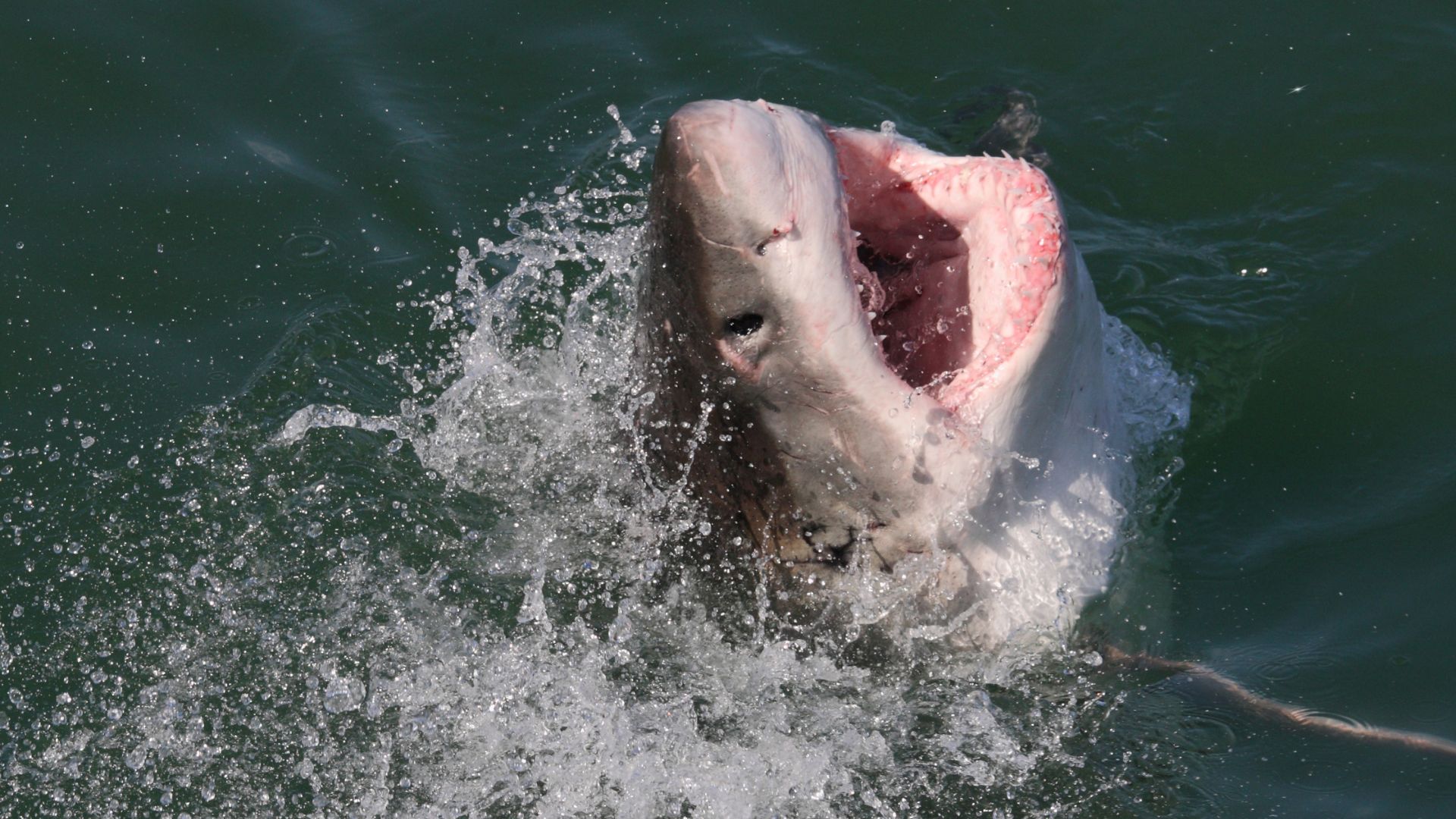
Sharks have intrigued humans for centuries, both for their terrifying reputation and their essential role in the ocean’s ecosystem.
While many species are harmless, a select few have earned notoriety for their dangerous interactions with humans.
1. Goblin Shark
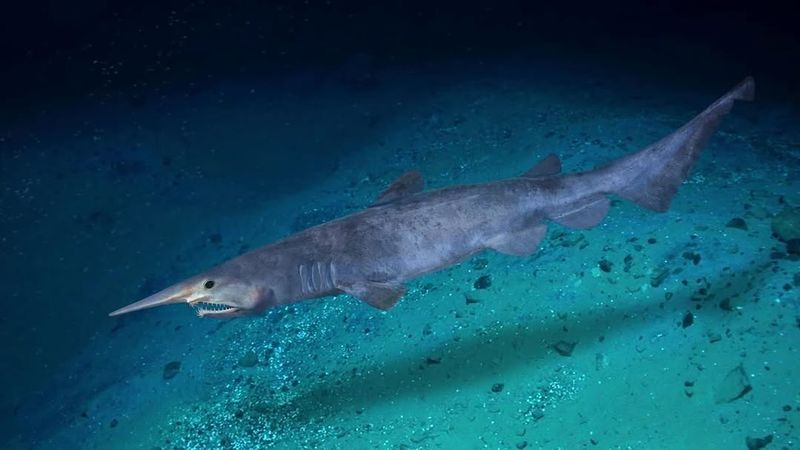
The Goblin Shark is one of the most peculiar and mysterious sharks in the ocean, often referred to as the “living fossil” due to its ancient lineage. Its most distinctive feature is its long, flat snout that resembles a goblin’s, which is equipped with sensory organs to detect prey in the deep, dark waters it inhabits.
Goblin sharks are typically found in deep waters, far from human interaction, making encounters with them extremely rare. Despite their eerie appearance, goblin sharks are not considered a threat to humans.
2. Whale Shark
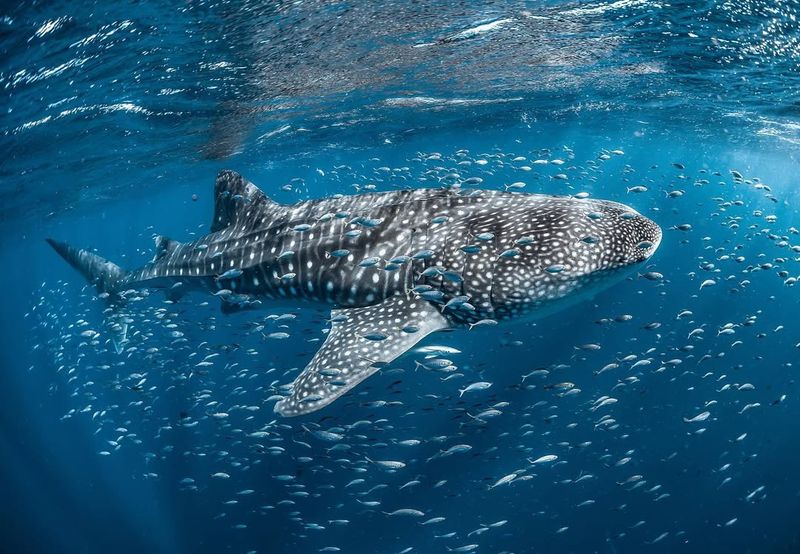
The Whale Shark is the largest species of shark and, in fact, the largest fish in the world. Despite their massive size, these gentle giants feed primarily on plankton, small fish, and other microscopic organisms by filter-feeding through their enormous mouths.
Whale sharks are often seen gliding through warm ocean waters, traveling long distances in search of food.
3. Blacktip Shark
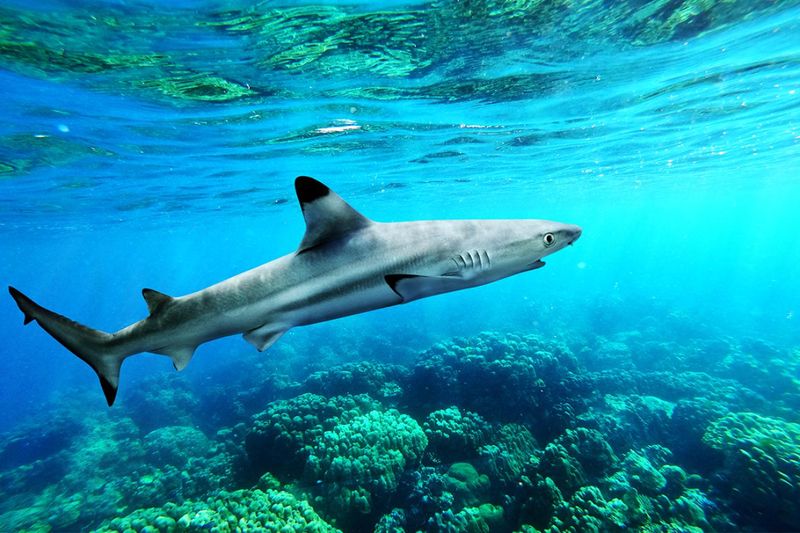
Blacktip sharks are named for the black tips on their fins, which make them easily identifiable. They are commonly found in warm, shallow waters close to shore, where they hunt small fish and invertebrates. Their agile movements and jumping ability make them a spectacle for onlookers.
While not typically aggressive towards humans, blacktip sharks are responsible for a number of bites each year, often due to their proximity to swimmers and surfers. These incidents are usually minor, resulting from curiosity rather than hostility.
4. Sand Tiger Shark
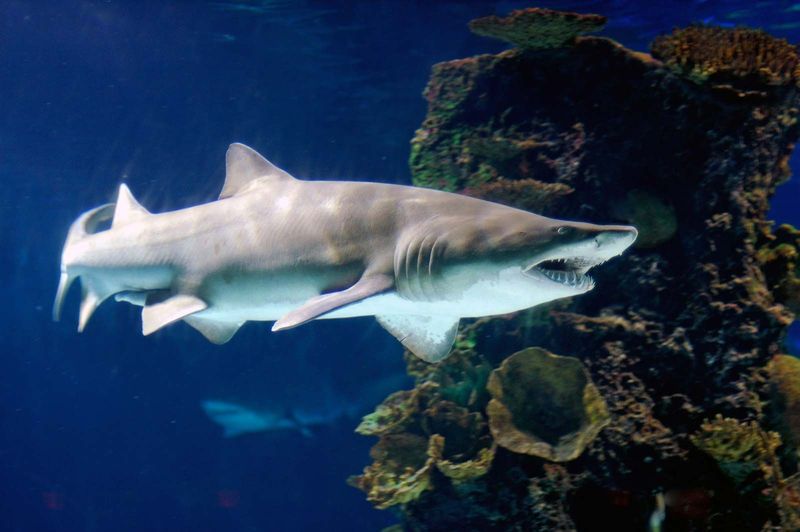
Sand tiger sharks, despite their fearsome appearance, are generally docile and pose little threat to humans. Their sharp, protruding teeth give them a menacing look, but they are slow-moving and prefer to avoid confrontations. They are often found in shallow coastal waters and aquariums.
While sand tiger sharks have been known to bite humans, these incidents are rare and usually result from provocation or mistaken identity.
5. Blue Shark
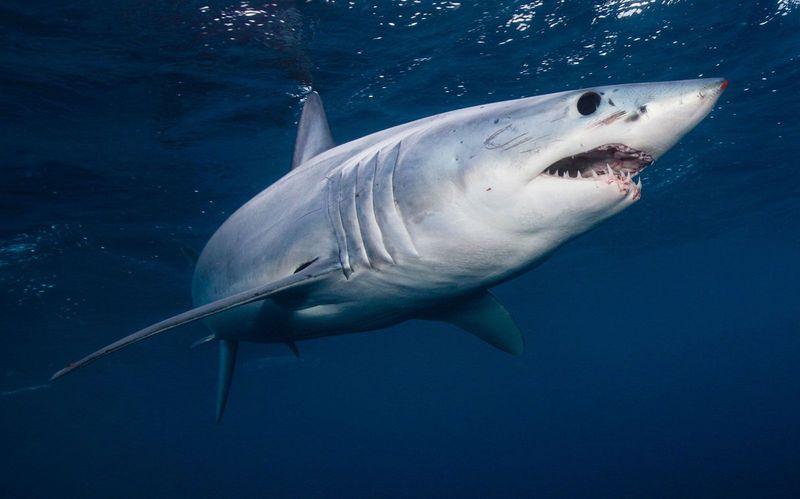
They inhabit deep, open oceans and are highly migratory, traveling long distances across the seas. Their diet mainly consists of small fish and squid, which they hunt using their keen sense of smell.
Despite their beauty, blue sharks are considered dangerous due to their inquisitive nature. They are known to approach divers and boats, sometimes leading to unwanted encounters. However, they are not usually aggressive unless threatened.
6. Mako Shark
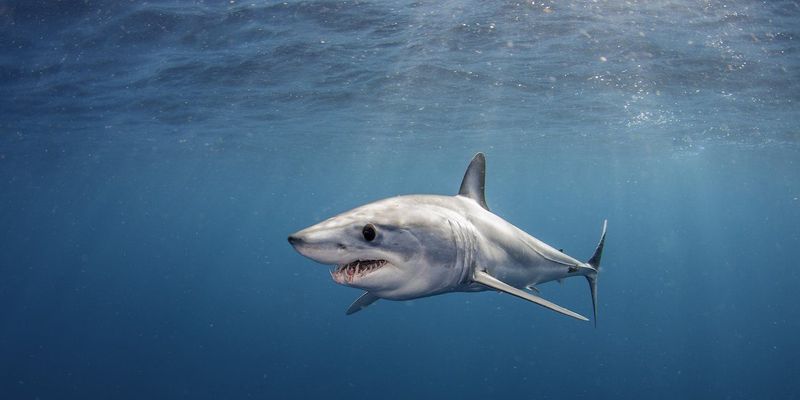
The mako shark, known for its incredible speed, is one of the fastest sharks in the ocean, capable of reaching speeds up to 45 mph. This agility makes it a formidable predator, often seen chasing fast-moving prey like tuna and swordfish.
Mako sharks are known to inhabit offshore waters, where they pose a threat to fishermen due to their aggressive nature when provoked. While attacks on humans are rare, their power and speed mean they should not be underestimated.
7. Oceanic Whitetip Shark
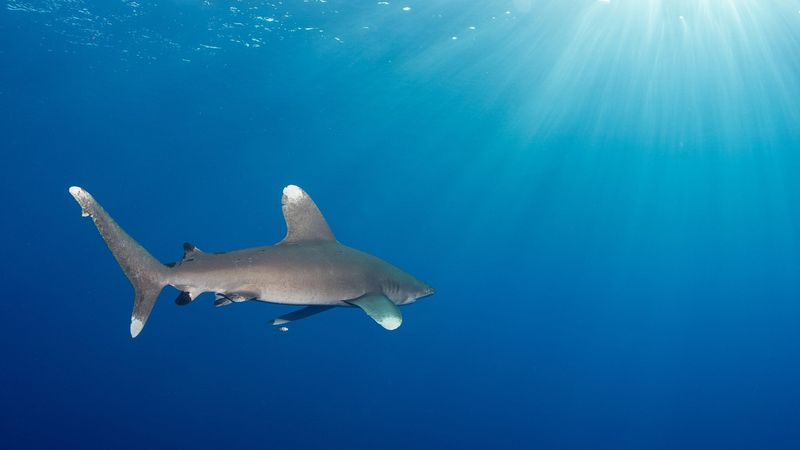
Known for their long pectoral fins and distinctive white tips, oceanic whitetip sharks are formidable open-ocean predators. They are often found far from land, patrolling the ocean’s surface in search of food. Their diet primarily consists of fish and squid, but they are not shy about investigating human activity.
Their danger to humans is primarily due to their curious nature and tendency to approach boats and swimmers. Oceanic whitetips have been implicated in attacks on shipwreck survivors, adding to their fearsome reputation.
8. Hammerhead Shark
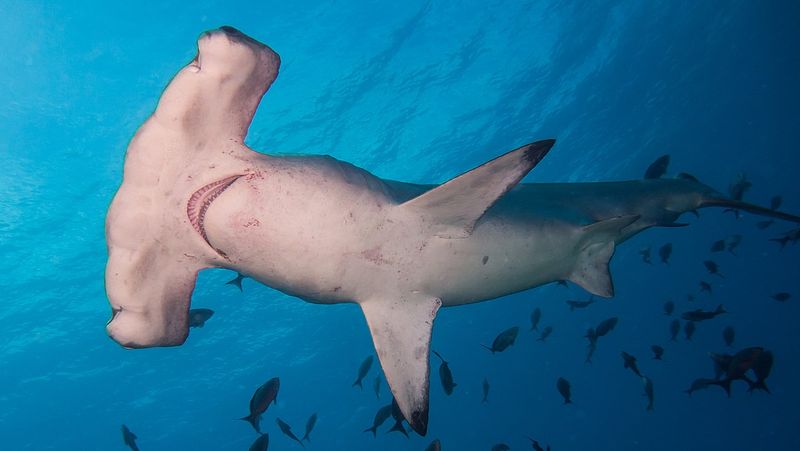
Hammerhead sharks are easily recognized by their unusual, hammer-shaped heads, which provide enhanced sensory capabilities. This adaptation allows them to detect prey more efficiently, making them skilled hunters.
While not typically aggressive towards humans, certain species like the great hammerhead are considered potentially dangerous. Their size and strength mean they can inflict serious injuries if provoked. However, attacks are rare and often result from mistaken identity.
9. Bull Shark
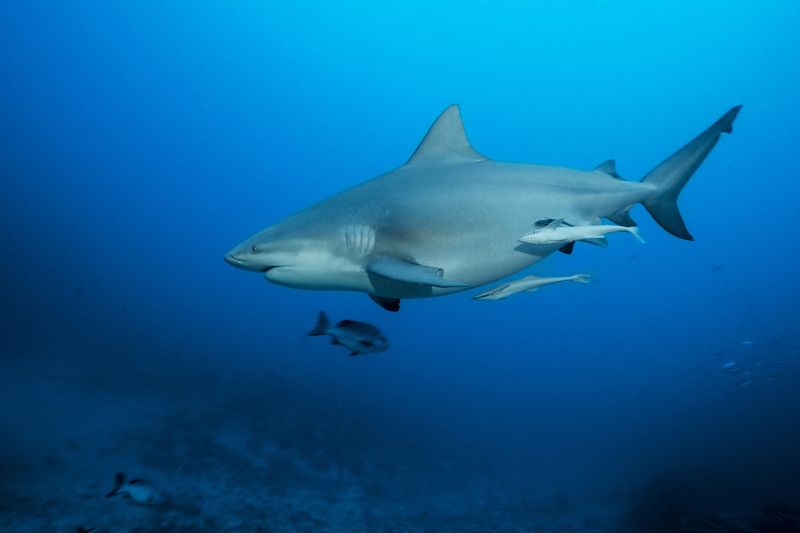
Bull sharks are notorious for their aggressive nature and ability to thrive in both salt and freshwater. This adaptability allows them to travel far upriver, leading to more human interactions than other shark species. They are often found in warm, shallow waters, where they hunt a variety of prey.
Their aggressive behavior is attributed to high levels of testosterone, making them one of the most dangerous sharks in the world. Bull sharks are responsible for numerous bites, partly due to their preference for coastal and riverine environments where people swim.
10. Tiger Shark
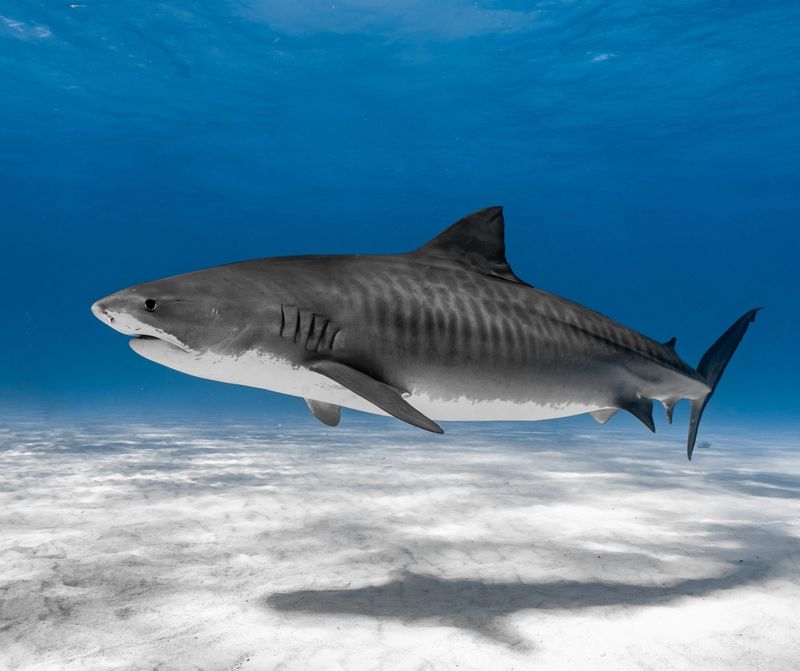
Recognized by their unique markings, tiger sharks are often referred to as the “garbage cans of the sea.” They have a diverse diet, consuming everything from fish to inedible objects found floating in the ocean. Their opportunistic feeding habits make them unpredictable.
Tiger sharks are second only to great whites in the number of attacks on humans. Their presence is often noted in tropical and subtropical waters worldwide, particularly near islands and atolls. Their nocturnal nature means they hunt primarily at night, adding an element of surprise to their encounters.
11. Great White Shark
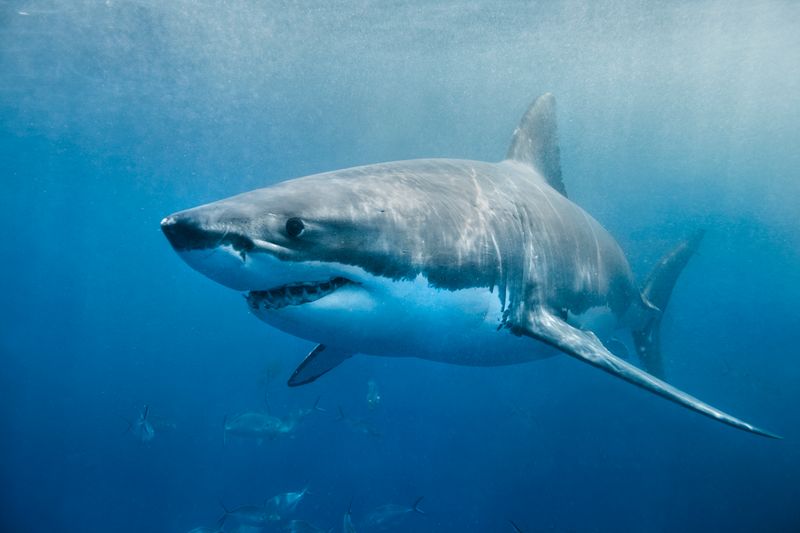
Often dubbed the ‘king of the ocean,’ the great white shark is infamous for its size and strength. These apex predators can grow up to 20 feet long and weigh over 5,000 pounds. Their powerful jaws and rows of sharp teeth make them formidable hunters.
In terms of danger, they are responsible for the highest number of reported shark attacks on humans. Despite their fearsome reputation, great whites are not mindless killers. They are curious creatures, often biting out of curiosity rather than aggression. Understanding their behavior is vital for safety.






